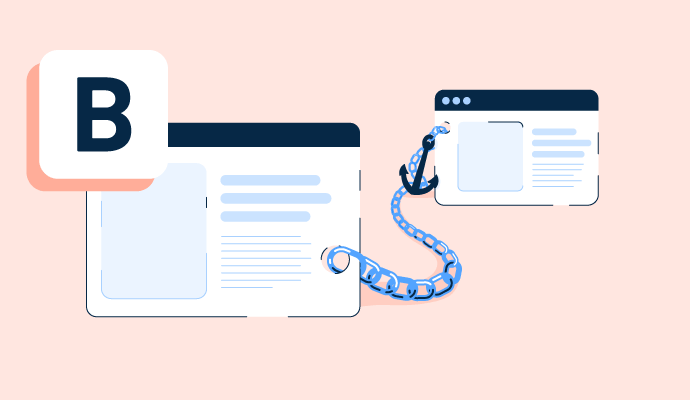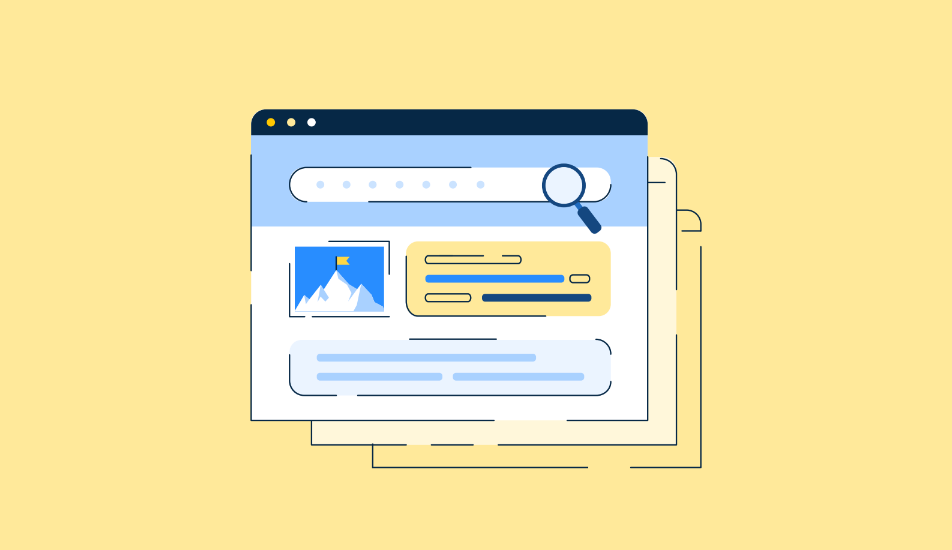What are backlinks?
Backlinks are links from one website to another. Also referred to as “inbound links” or “external links,” they come from a website that isn’t owned by the business or from one owned domain to a separate owned domain.
Search engines like Google consider backlinks to be a vote of confidence. For instance, if a high authority website provides a backlink to another website, the linked site gains authority thanks to the power of the linking site. Businesses turn to search engine optimization (SEO) software to improve a website’s off-page SEO by monitoring backlinks and identifying new link building opportunities.
Despite search algorithms continually changing, Google has confirmed that backlinks remain one of the top three most important ranking factors, making backlinks an important part of any SEO strategy.
Types of backlinks
Not every type of backlink is equal. Search engines assess link placement and origin to determine how much credit a link gets. The most common types of backlinks include:
- Editorial backlinks are the most sought-after type of backlink. These are direct links embedded within the relevant, high-quality copy on a site, like a news article or blog post. These links typically occur when a site is referenced as a source of information.
- Guest blogging backlinks are usually found within web copy. Instead of being written by the linking site, the person who wants a link back to their site creates the content as a guest writer for the originating site. Guest post backlinks may also feature in the author bio section of a blog post or article.
- Business profile backlinks contain contact information, including a link to the company’s site. These aren’t as highly valued as in-copy links but are still helpful on an industry-relevant site.
- Badge backlinks award badges of recognition or logos placed on the site of a business they’ve worked with. These can be useful for creating relevant industry connections between different sites.
- Comment backlinks come from a site’s comment section. When commenting on an article or blog post, websites may offer an option to include a link. Spammers have historically exploited this type of backlink, so they’re considered to be one of the lowest quality types of links.
Typical uses of backlinks
Backlinks are either attributed as “follow” or “nofollow.” Followed links allow search engines to pass authority from the linking site to the linked-to site. Nofollow links let search engines know that the linking site doesn't want to pass any authority, although it’s at the discretion of the search engine whether or not they choose to do so.
Whether followed links or not, backlinks are used for:
- Giving users a wider context for information. Backlinks can direct users to additional information on a different website. The article or blog post linking out may not want to cover the particular topic in detail within their own content but acknowledges that further information may be useful for a reader who wants to explore on their own.
- Supporting a claim made within the content. If a piece of content uses a statistic or takes information from somewhere else to repurpose within its copy, it’s courteous to link back to the original source of the data. This also authenticates claims made within the post.
- Providing a recommendation to a user. For review articles or blog posts, a backlink typically takes a site user to the site of the product or service being recommended. This makes it easier for a user to find what they’re looking for quickly.
Benefits of backlinks
The number and quality of backlinks a site has can significantly improve the site’s ranking position within search engines. Backlinks also:
- Boost a site’s credibility and authority. Backlinks from reputable sites demonstrate that the linked-to site has value. This is important from an overall site health perspective, as well as for establishing a site within its industry or niche.
- Help search engines discover new sites. Although search engines can find sites on their own, backlinks make it easy for them to discover. Following a backlink from one site to another sends signals to search engines to crawl the linked-to site and index it for the search engine results page.
- Send referral traffic from one site to another. Users moving from one site to another without using a search engine are considered referral traffic. These backlinks act as a digital form of word-of-mouth marketing. They can increase brand awareness with new audiences, along with providing qualified leads if users are moving between industry-related sites.
Best practices for getting backlinks
Establishing a backlink plan should be part of any SEO strategy. Several effective ways to maximize link building are available, depending on what industry the business is in, the budget allocated for PR, and the resources available to execute the strategy.
- Create link-worthy content. Producing high-quality content that other sites naturally want to link to is one of the best ways to generate backlinks. This could be informative, like a case study or tutorial, or it could be more entertaining, like a gossip column or dance challenge video.
- Write relevant guest posts. Partnering with other businesses and providing useful information with a link included to the writer’s site is beneficial for exposure and linking potential.
- Publish original research. Businesses may conduct market or product research that’s relevant to their industry. Publishing this online and sending out press releases to the media can generate backlinks from a range of relevant sources.
- Respond to media pitches. Journalists are always looking for sources they can cite in their articles. Making connections with media on social networking platforms or responding to open calls for sources through sites like Help A Reporter Out (HARO) can generate relevant, high authority links.
Track inbound backlinks and strategize future link building with targeted inbound marketing services and software.

Holly Landis
Holly Landis is a freelance writer for G2. She also specializes in being a digital marketing consultant, focusing in on-page SEO, copy, and content writing. She works with SMEs and creative businesses that want to be more intentional with their digital strategies and grow organically on channels they own. As a Brit now living in the USA, you'll usually find her drinking copious amounts of tea in her cherished Anne Boleyn mug while watching endless reruns of Parks and Rec.





















